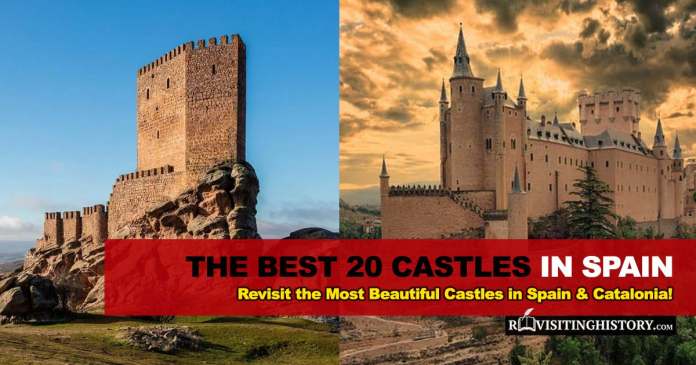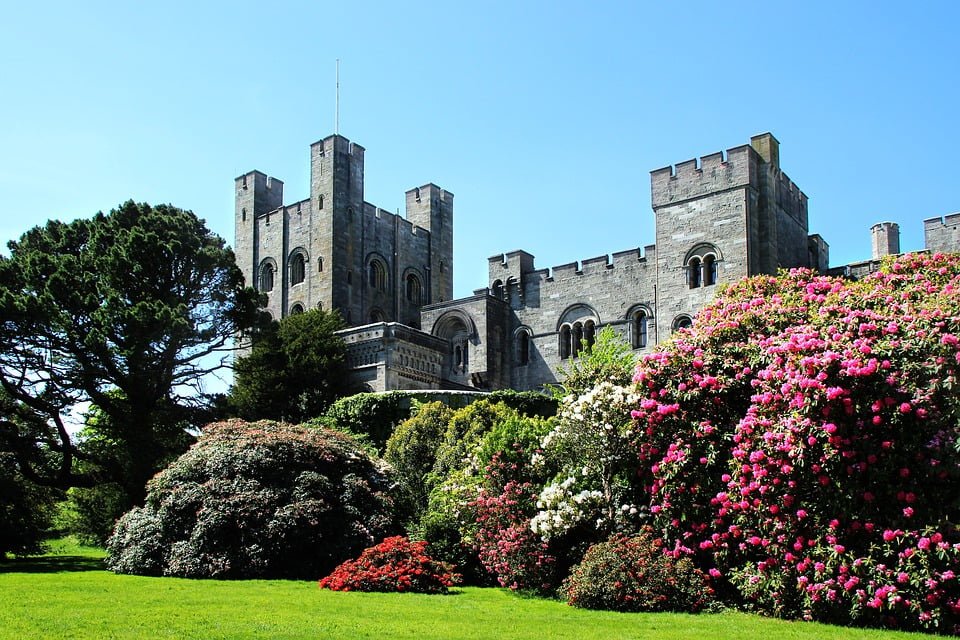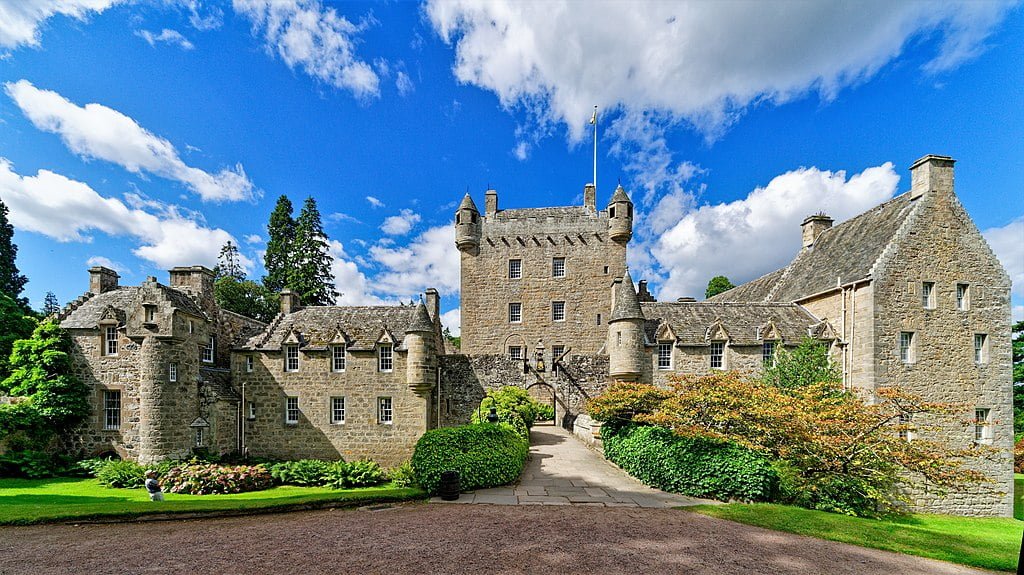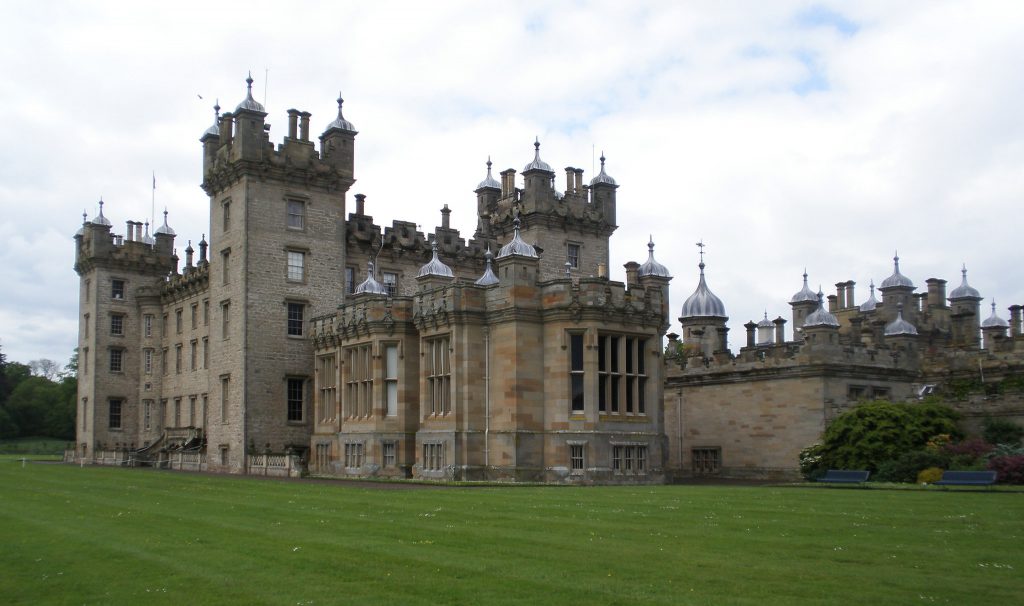The history of Spain is filled with stories of war, strife, conflict, and adventure. This resulted in a lot of castles and fortresses being built to protect themselves from invasions by intruders. From military fortresses to fairy tale castles, Spain has it all!
Can you believe that Spain has around 2500 castles? Astounding, isn’t it?
These castles are a great tourist attraction, and they showcase perfectly the history, culture, magnificence, and grandeur of the centuries gone by. So, if you are on a visit to Spain, we suggest you pay a visit to these awesome castles.
Given below are some very popular, most visited and quite impregnable top 10 castles of the country of Spain. Furthermore, for keen and enthusiastic travelers seeking to explore not-so-crowded and less-visited places, we have listed ten more castles, which are nevertheless just as remarkable and spectacular as the first ten.
Table of Contents
10 Most Popular Castles to Visit in Spain
The order of the list is based on Google search volume of each castle = popularity.
1. Castillo De San Marcos
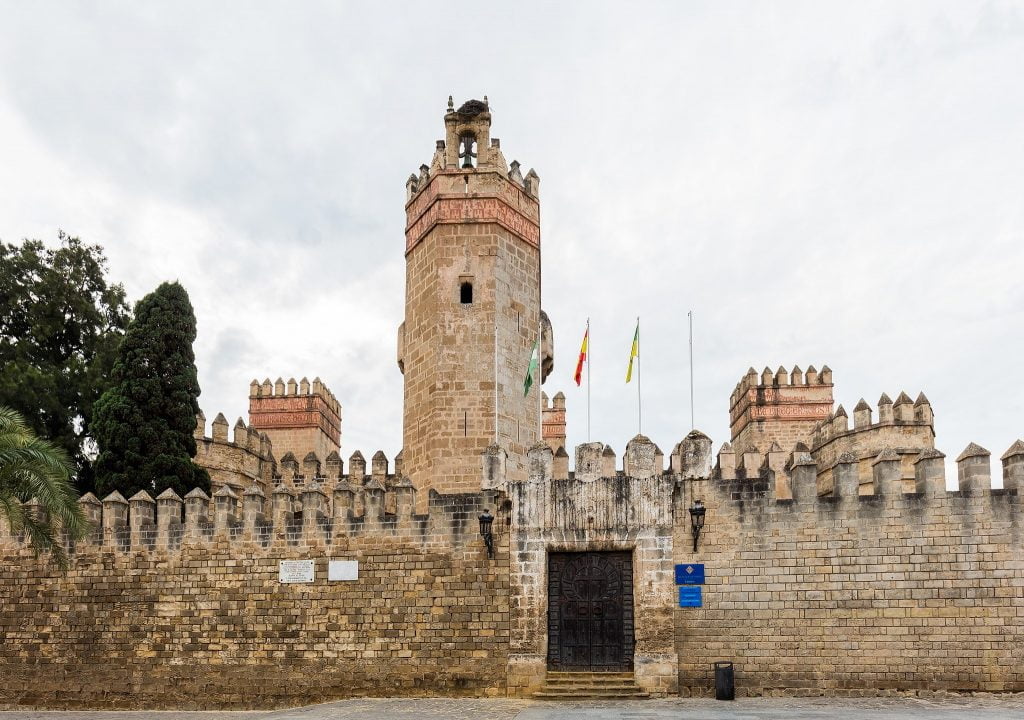
Not to be confused with its eponymous relative in the United States, the Castillo De San Marcos in Spain was once a fortified church that was erected at the behest of Alfonso X. The site where it was constructed previously hosted a Muslim mosque, which was demolished when the church was built. Most of the foundations and columns of the main hall are Roman in origin, suggesting an even earlier origin.
These days, this castle/church is an inherent part of Spanish cultural and architectural heritage. It was nationalized in 1920 and even enjoys a position on the Spanish Heritage Register because of its unique formation and historical value. It has been the property of the Caballero Group since 1959.
- Location: Cadiz
- Time built: 1264
- Architectural style: Medieval
- Touring: Allowed. Visit the official website for more information.
2. Alhambra Castle
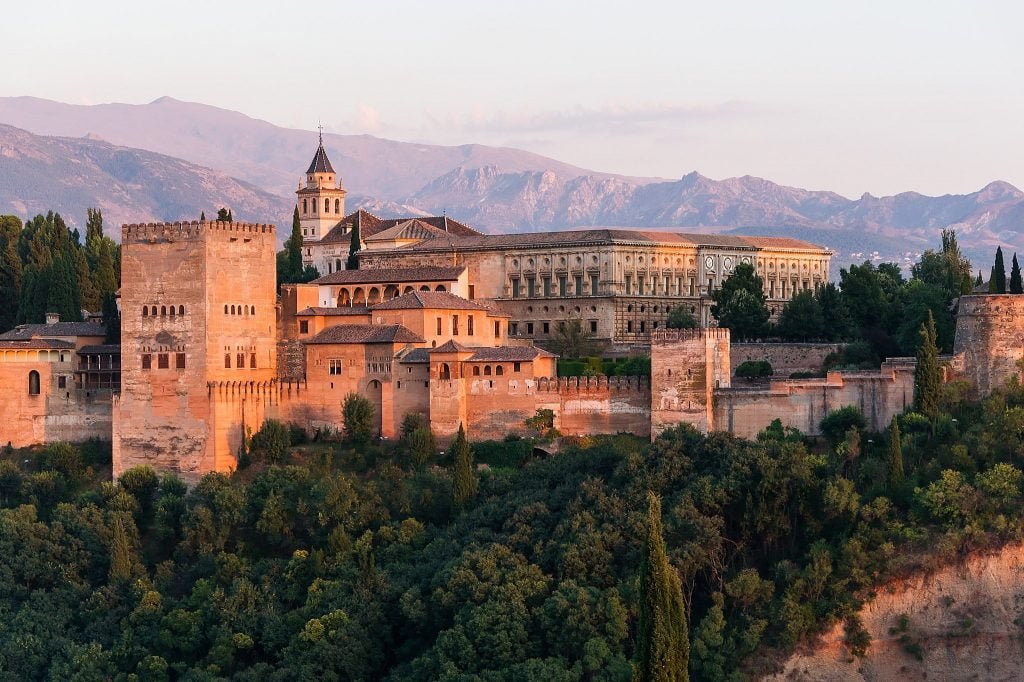
The Alhambra Castle is considered one of the most magnificent castles in the world because of its outstanding architecture. This ancient fortress and citadel is located in the city of Granada.
The name Alhambra comes from the reddish walls and towers that surround the castle. In Arabic, it means red fort or castle. It is also a reminder of the Islamic Golden Age and the only remnant of the Nasrid Dynasty, the last Islamic kingdom in Western Europe.
It is a very popular tourist attraction and you could easily spend hours looking at the fortress, the palace, and its enchanting gardens. It is indeed an architectural marvel, which has been the source of influence of many literary works, films and art.
UNESCO recognized the Alhambra as a World Heritage Site in 1984.
- Location: Granada
- Time built: 8th century
- Architectural style: Islamic
- Touring: Allowed. Visit the official website for more information.
3. Atalaya Castle
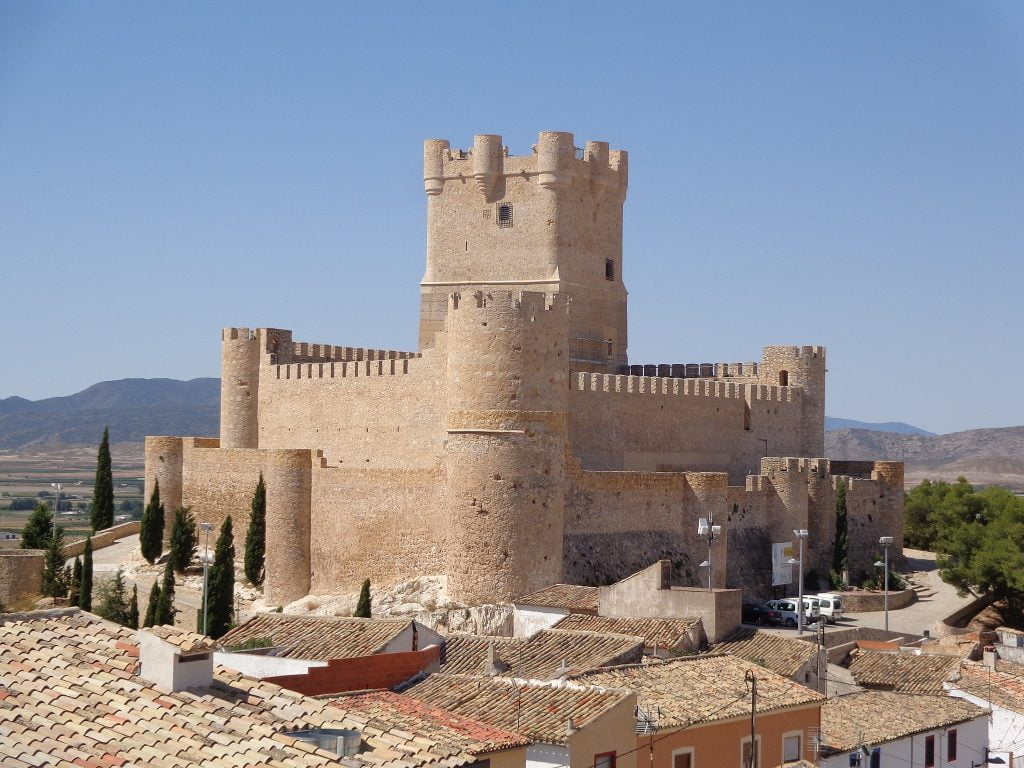
Located in the city of Villena, Atalaya Castle is suspected to have been built on the remnants of a Roman villa. Its actual date of origin is not known, but it has been mentioned in pre-12th century Arab sources, so it’s speculated that it was constructed some time before that.
The sheer sturdiness of this castle is a testament to its amazing design. In fact, it was so resilient that it survived three sieges by James I the Conqueror. Over the centuries, it survived several more sieges until the end of the Peninsular War. It was then restored and declared a national monument in the 20th century.
- Location: Villena
- Time built: Pre-12th century
- Architectural style: Hispanic Military Style
- Touring: Allowed. Visit the official website for more information.
4. Alcázar of Segovia
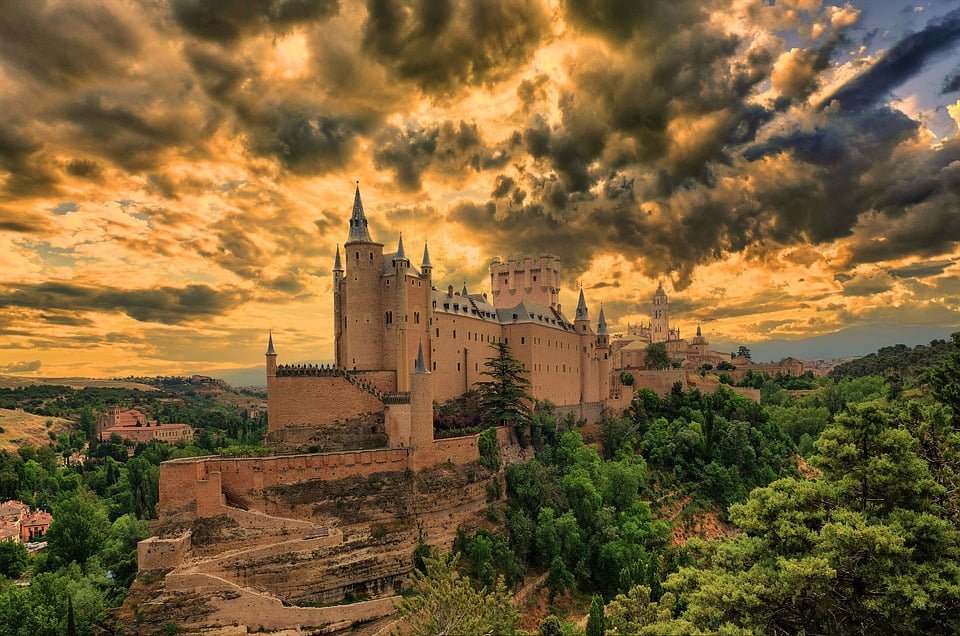
Considered one of the best castles in Spain, this castle stands high over the countryside of Segovia. It is steeped in history and is also a UNESCO World Heritage Site. It also holds the distinction of one of the most unique castle-palaces in the whole of Spain due to its shape like the bow of a boat.
Moreover, it was the real-life inspiration for Snow White’s castle!
It was the fortified palace of the kings of Castile. The original building had been extensively destroyed by a fire in 1862 but has since then been restored. This castle has been a refugee site, a military site, a royal palace, and even served as a jail fortress. Now it features an armory museum and a tourist heritage site.
- Location: Segovia
- Time built: 12th century
- Architectural style: Gothic
- Touring: Allowed Visit the official website for more information.
5. Alcazar of Seville
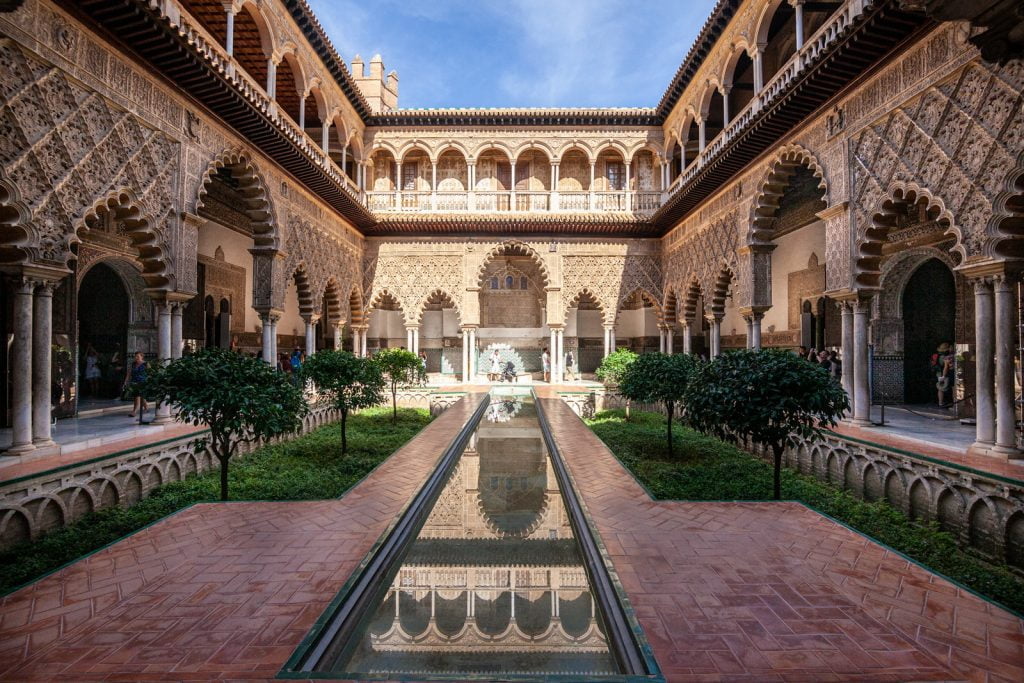
The Royal Alcazar of Seville, recognized as a Unesco World Heritage Site, is Europe’s oldest existing palace. Its beginnings can be traced back to the 11th century when Muslim officials chose to construct a castle in a key position of Seville to ensure the city’s security. The Alcazar complex, surrounded by a wall, is made up of various castles and gardens created over multiple historical periods.
Later in the 14th century, Peter I, King of Castile, not only appreciated Muslim culture and surrounded himself with Muslim counselors and Jews, but he also formed a mutual aid treaty with the Nasrid Sultan of Granada (in theory his adversary) to better protect himself against internal opponents.
The beautiful palace of King Peter I can today be found within the gates of the Alcazar of Seville, thanks to his progressive attitude and acceptance of cultural and religious differences.
- Location: Seville
- Time built: 11th century
- Architectural style: Mudéjar style
- Touring: Allowed. Visit the official website for more information.
Revisit More Historic Places Below or Read Further
6. Castillo de Colomares
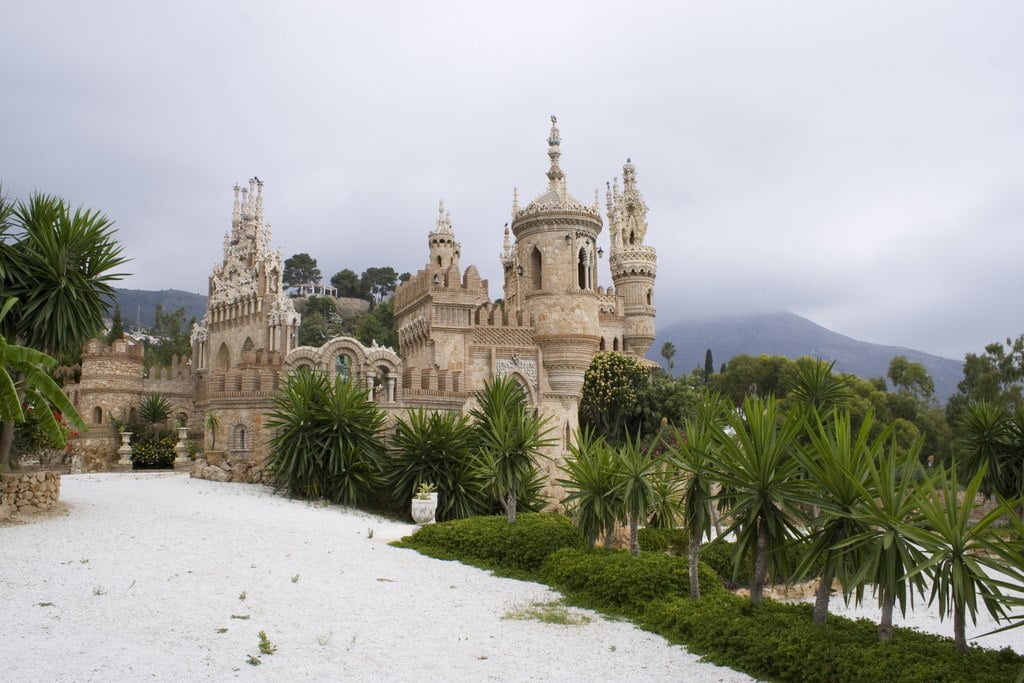
Esteban Martin, a doctor from the United States, built the castle between 1987 and 1994. Dr. Esteban was so taken aback by the lack of attention and information paid to this renowned adventurer that he decided to build a castle to commemorate Christopher Colombus’ discovery of the Americas.
The monument portrays the account of the discovery of the American continent in numerous situations using various materials such as natural stone, bricks, wood, and concrete. A depiction of the expedition’s three boats and a picture of Saint Salvador in homage to San Salvador Island are among them.
Tourists are welcome to go inside, where there are magnificent colored glass windows.
Colomares Castle has served as falconry, a reptile center, and a museum over the years. It is still one of Benalmadena’s most famous tourist sites, a historical monument to visionaries and enthusiasts, an attractive fantasy-like structure, and a must-see location for anybody visiting the area.
- Location: Benalmádena
- Time built: 20th Century
- Architectural style: Gothic architecture, Romanesque architecture, Byzantine architecture, Moorish Revival architecture
- Touring: Allowed. Visit the official website for more information.
7. Alcázar of Toledo
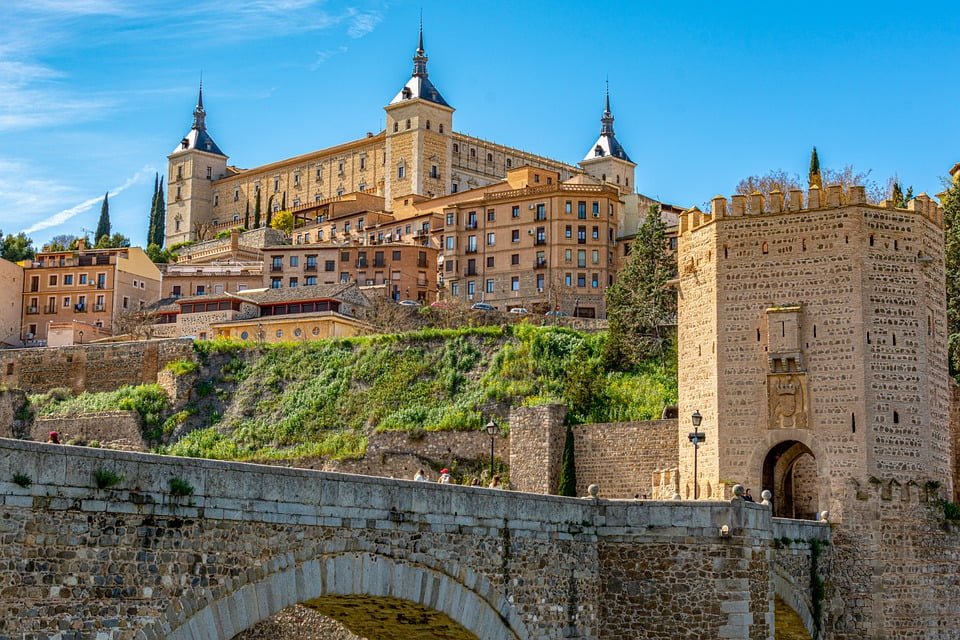
The Alcázar of Toledo is a castle built of stone in the city’s highest point. It was used as a Roman mansion in the 3rd century and was rebuilt and remodeled in 1535 under Alfonso VI and Alfonso X.
In the Battle of the Alcazar during the Spanish Civil War, patriot Colonel Jose Moscardo Ituarte defended the castle against the overpowering Spanish Republican troops.
The structure had been heavily damaged by the end of the battle. It was reconstructed after the fight and now hosts the Castilla-La Mancha Regional Library and the Army Museum.
When you consider the building’s history, it’s no wonder that it now houses a significant army museum. The museum is housed in two structures: the massive Alcazar itself and a new structure adjacent to it.
- Location: Toledo
- Time built: 16th Centuries
- Architectural style: Renaissance architecture, Plateresque, Medieval architecture, Purism
- Touring: Allowed. Visit the official website for more information
8. Alcázar de los Reyes Cristianos
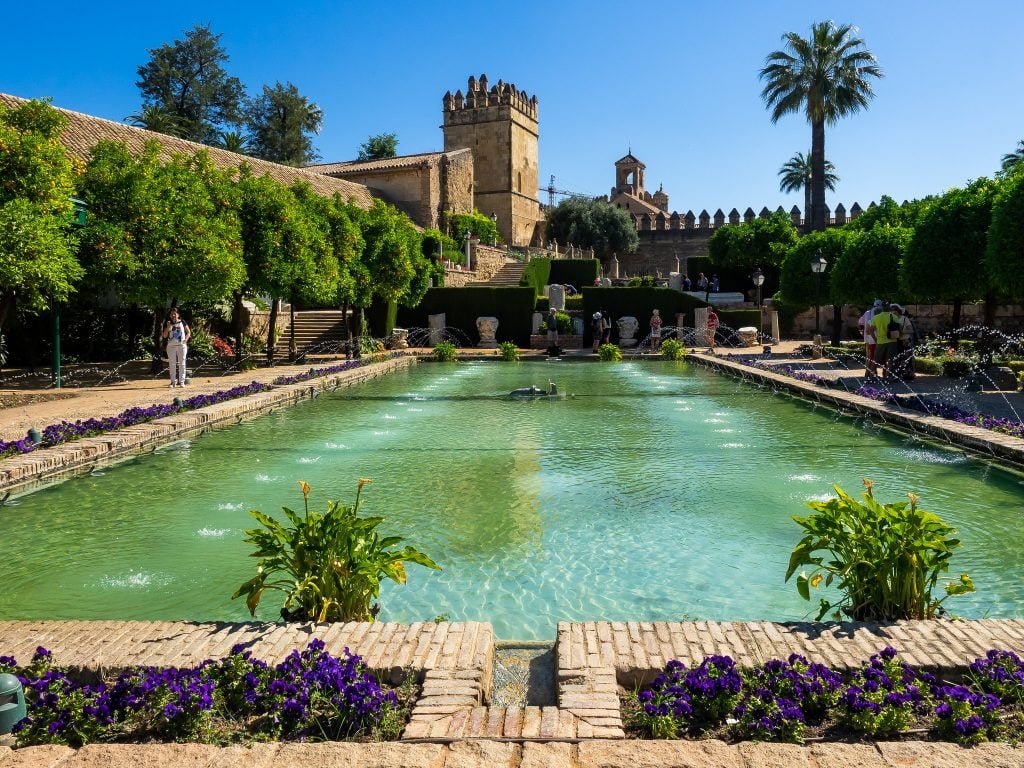
This remarkable palace and fortress is one of Cordoba’s major attractions. The fortress served as one of the main residences of the Catholic Monarchs Isabella I of Castile and Ferdinand II of Aragon. It is also where the royals met Christopher Columbus to discuss his trip to America.
Today, the fortress is home to many remarkable ancient artifacts, including a Roman sarcophagus from the third century and Roman mosaics displayed in the Hall of the Mosaics. However, the major attraction of this royal castle lies in its glorious, outstanding and spacious gardens, filled with ponds, fountains, orange trees, topiary, and flowers.
They give the castle an air of grandeur and take you back into the rich culture of the place. It is also a part of the Historic Center of Córdoba, which was declared as a World Heritage Site by UNESCO in 1994.
- Location: Córdoba
- Time built: 13th Century
- Architectural style: Spanish Gothic
- Touring: Allowed. Visit the official website for more information.
9. Bellver Castle
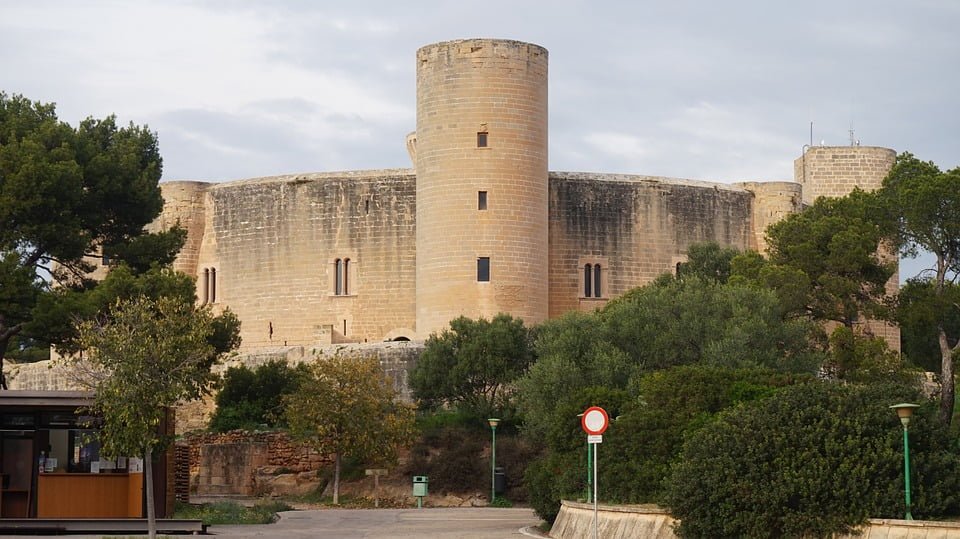
The Castle of Bellver is a historically powerful fortress and was built in the 14th century for King James of Majorca.
Located in the heart of Palma in the Majorca Islands, it served as the seat for a succession of Kings and saw a lot of mayhem and massacre in its day. It survived two sieges but ultimately fell during the Revolt of the Brotherhood in the 16th century.
The monument is currently in use as a museum after it was given to the city of Palma along with the forest surrounding it. The Sunday following Easter Sunday, the citizens gather at the forest and the castle for the celebration of a local festival as a closing to the festival season.
- Location: Palma, Majorca
- Time built: 14th Century
- Architectural style: Gothic
- Touring: Allowed. Visit the official website for more information.
10. Alcazaba of Málaga
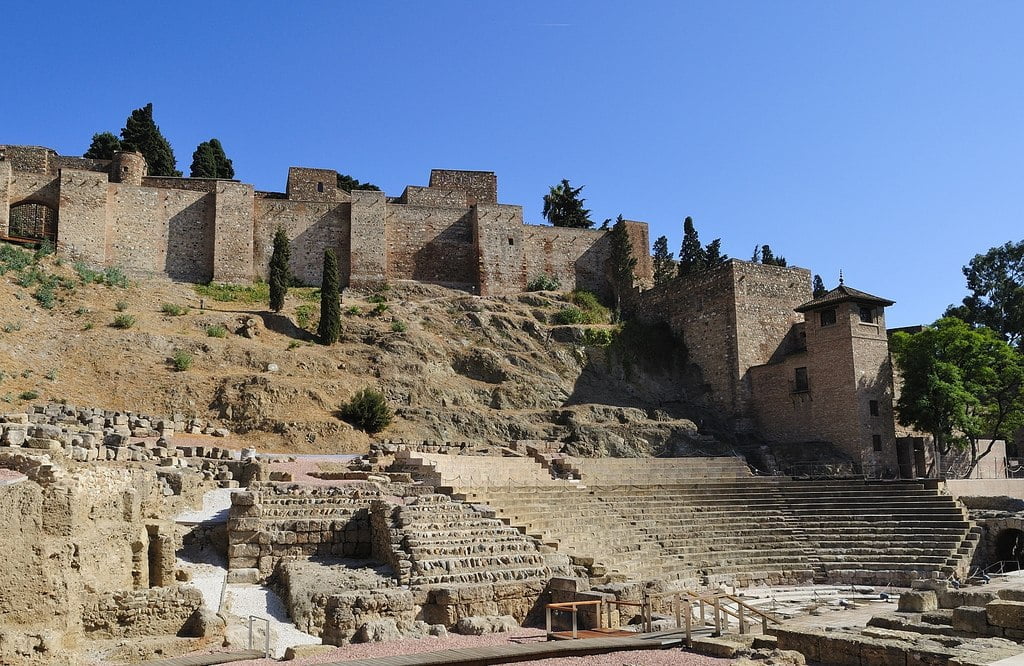
A series of archaeological digs at the Alcazaba de Malaga have revealed remains of Roman walls, lined with red stucco, along with small cisterns carved into the local slate rock. The cisterns were used for making garum, a fish paste made by the Romans.. There is also a dungeon where Christian slave girls were locked after working during the day.
The military elements of the structure make it one of Spain’s most notable Muslim works today. The machicolations, bunkers, arrow slits, and watchtowers heightened the effect, but the Alcazada’s location–commanding city and harbour–was possibly the most effective defense throughout the settlement’s history.
- Location: Málaga
- Time built: 11th Century
- Architectural style: Moorish architectural style
- Touring: Allowed. Visit the official website for more information.
Planning to Visit Nearby Countries? Check Out These Best Castles Lists:
10 Less Popular Castles Worth Visiting While In Spain
If you are a castle aficionado, you must surely take out the time to visit these equally spectacular castles.
11. Castle of Loarre
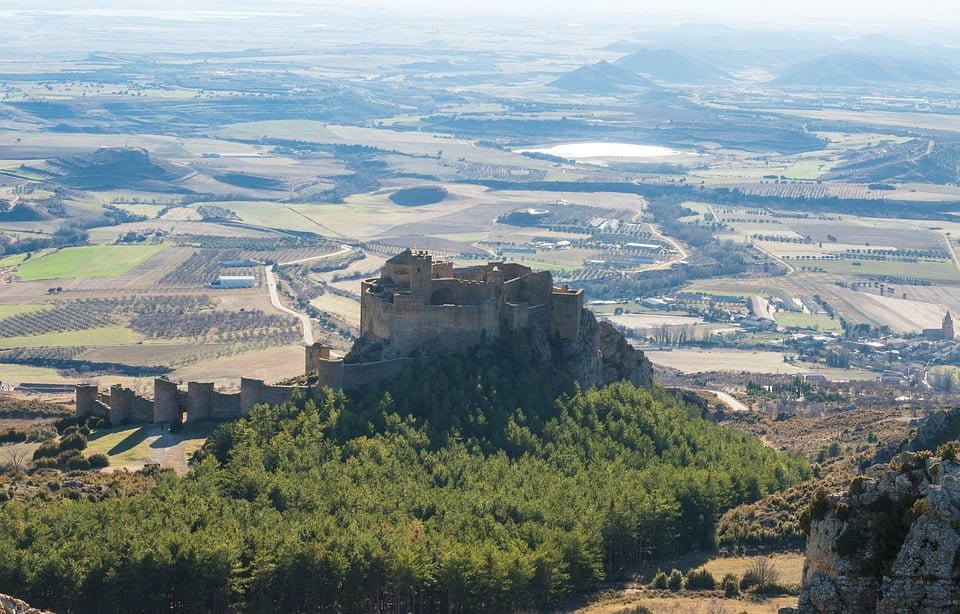
This castle-turned-abbey is one of the oldest in Spain, enjoying a picturesque location 1070 m (3510.5 ft) above sea level. It was first constructed in the 11th century by the King of Sancho as a fortification against Muslim attacks in the region. The monastery was added later, in order to house the canons of Augustine (a religious order of the Roman Catholic Church).
The military and religious elements of the castle make it one of Spain’s most notable monuments. To this day, the 170 m (557 ft) peripheral wall stands tall, proving to be an emblem of Spanish might that has persevered into the modern era. Moreover, the adventurous surroundings are perfect for participating in activities like paragliding and horse riding.
- Location: Huesca Province
- Time built: 11th Century
- Architectural style: Romanesque architectural style
- Touring: Allowed. Visit the official website for more information.
12. Castle of Coca
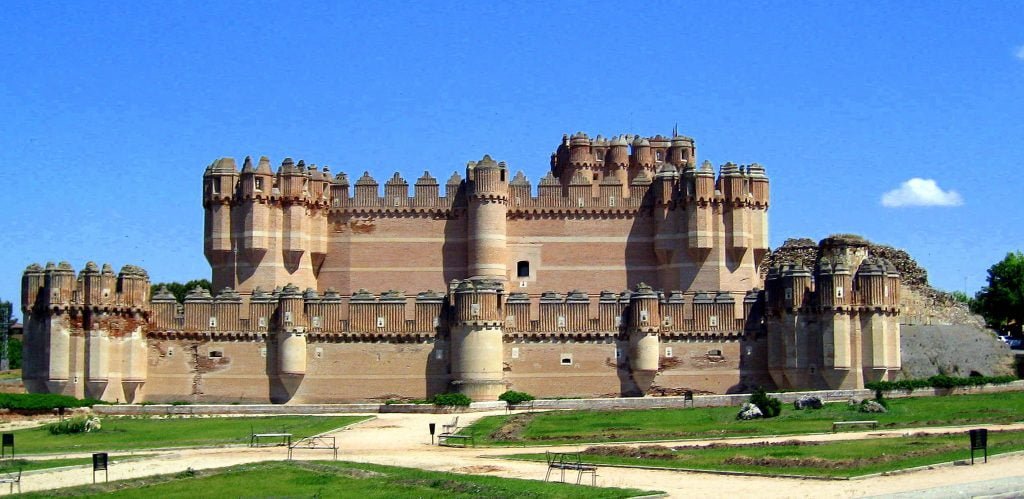
The archbishop of Seville may have been the one who instigated the construction of Coca Castle in 1451, but it was his brother who added the fortifications that we see today. Its rich architecture is one of the finest examples of Spanish vernacular constructions that you’ll ever see. The intricate Mudejar style brick-work is complemented with Moorish accents–giving the overall building a cheerful countenance despite its heavy-set, fully-fortified facade.
Today, this castle enjoys the status of a National Heritage Monument. It was once besieged by Napoleon, but is now in the custody of the Alva family. They’ve leased it to the government, which uses it for mixed purposes, as both a tourist destination and a forestry school. It’s quite a pity that no one is ever fully able to explore the various old passageways that have been cordoned off to segregate the school from the tourist areas.
- Location: Segovia
- Time built: 15th Century
- Architectural style: Mudejar architectural style
- Touring: Allowed. Visit the official website for more information.
13. Alcazaba of Almería
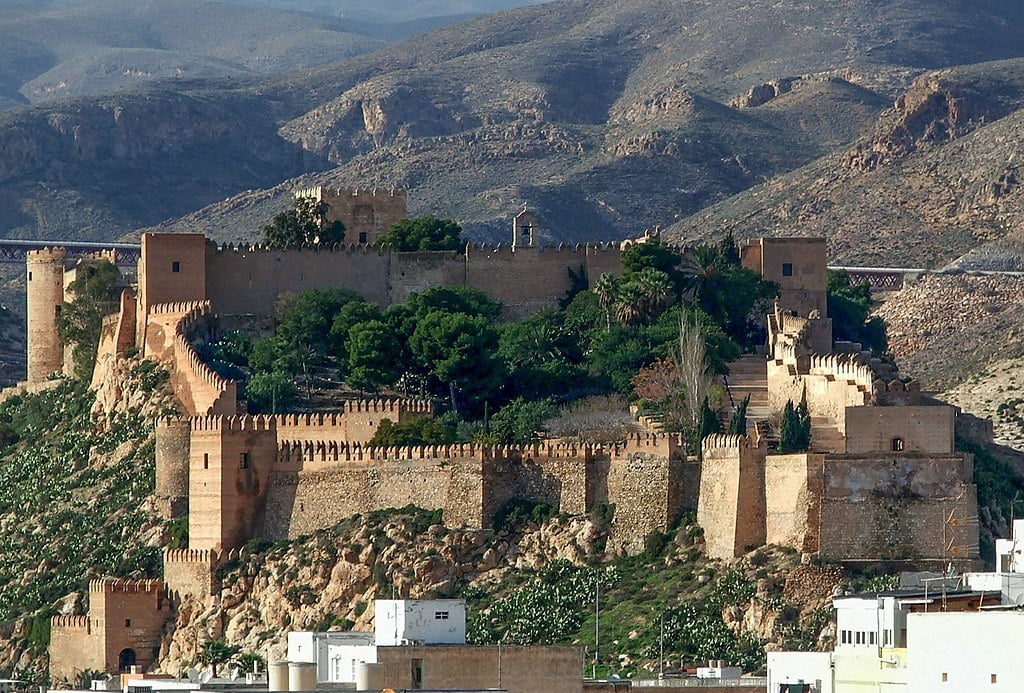
Hailed as the second-largest Muslim construction in Spain, the Alcazaba of Almeria was built on the behest of the Ummayed Prince Abd al-Rahman III. It’s less a ‘proper’ castle, and more of a complex that housed various enclosures, three campuses, bathrooms, public areas, and even a large garden that once used to house a fish pond.
It was eventually conquered by the Catholic monarchs at the end of the 15th century, but its majesty has survived the tests of time to this day. In modern times, the Alcazaba of Almeria has been quite a media darling with popular shows like Game of Thrones, as well as hit movies like Wonder Woman, being shot within its boundaries.
- Location: Almeria
- Time built: 10th Century
- Architectural style: Moorish architectural style
- Touring: Allowed. Visit the official website for more information.
14. Castle of Zafra
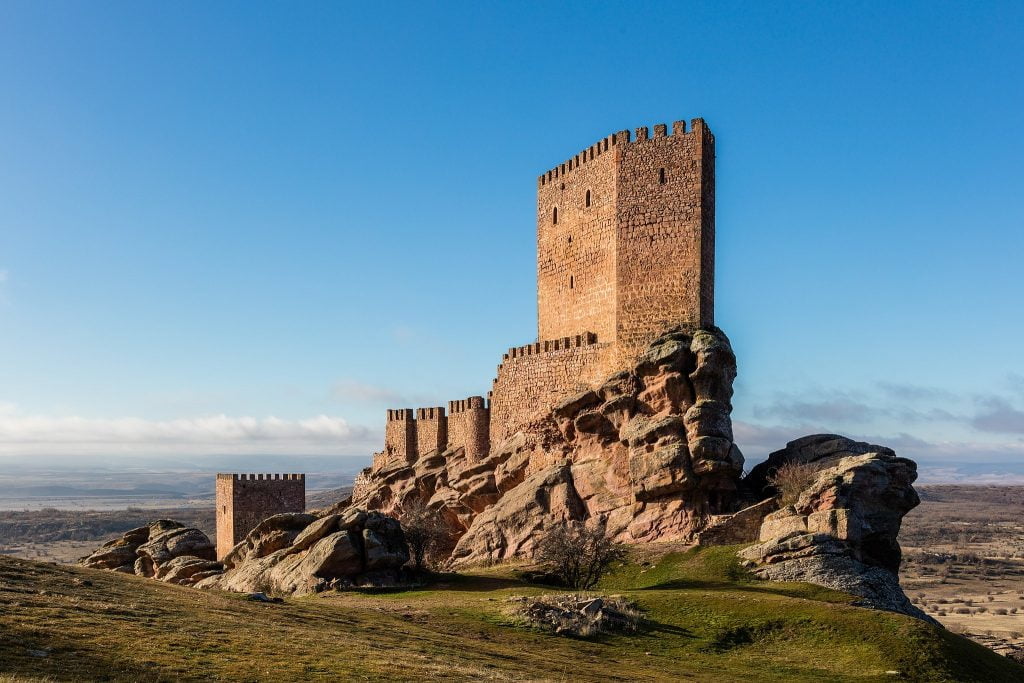
Standing in all its ruinous glory, the Castle of Zafra is one of Spain’s finest Moorish constructions. The tower-keep architecture and the unique location of this castle have a history steeped in ancient drama. It was first constructed on the behest of Don Gonzelos of the de Lara family, who wanted to overthrow King Fernando. It all ended with several sieges and a hasty family union, which stripped Don Gonzelos of any inheriting rights.
Today, this masterpiece of Spanish architecture is privately owned by Don Antonio Sanz Polo – a descendant of one of the previous owners. Although it has been restored, there aren’t any official tours. You can appreciate the outside, but not the interior.
- Location: Guadalajara province
- Time built: 12th-13th centuries
- Architectural style: Moorish Architectural Style
- Touring: Not allowed. No official website.
15. New Castle of Manzanares el Real
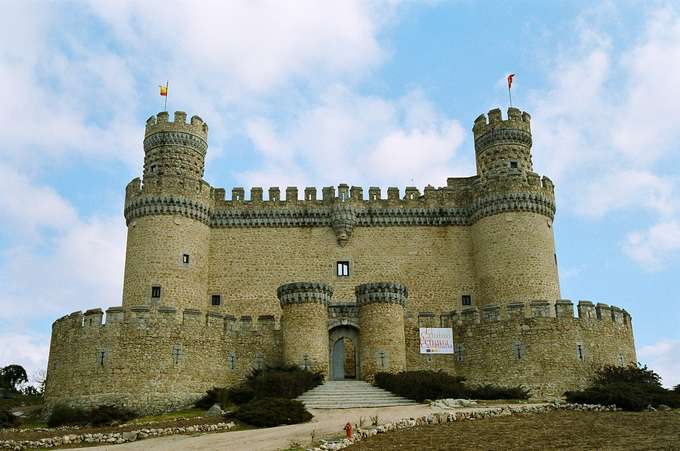
The New Castle of Manzanares el Real is one of the best-preserved buildings in all of Madrid and dates back 500 years. It was constructed at the end of the Spanish Reconquista (circa 1475) by Diego Hurtado de Mendoza as a defense against the recurring violence and atmosphere of power struggles that occurred at the end of the war!
The fortified palace was eventually abandoned, due to poor maintenance by the Mendoza family. Additionally, many inheritance issues ensured that it remained abandoned until the 20th century when it was revamped into a museum. Brimming with history and cultural heritage, it’s one of the best places to visit if you want to experience Spain in all its archived glory.
- Location: Sierra de Guadarrama
- Time built: 12th-13th centuries
- Architectural style: Romanesque-Mudéjar Architectural Style
- Touring: Allowed. Visit the official website for more information.
Revisit More Historic Places Below or Read Further
16. Castillo Ampudia
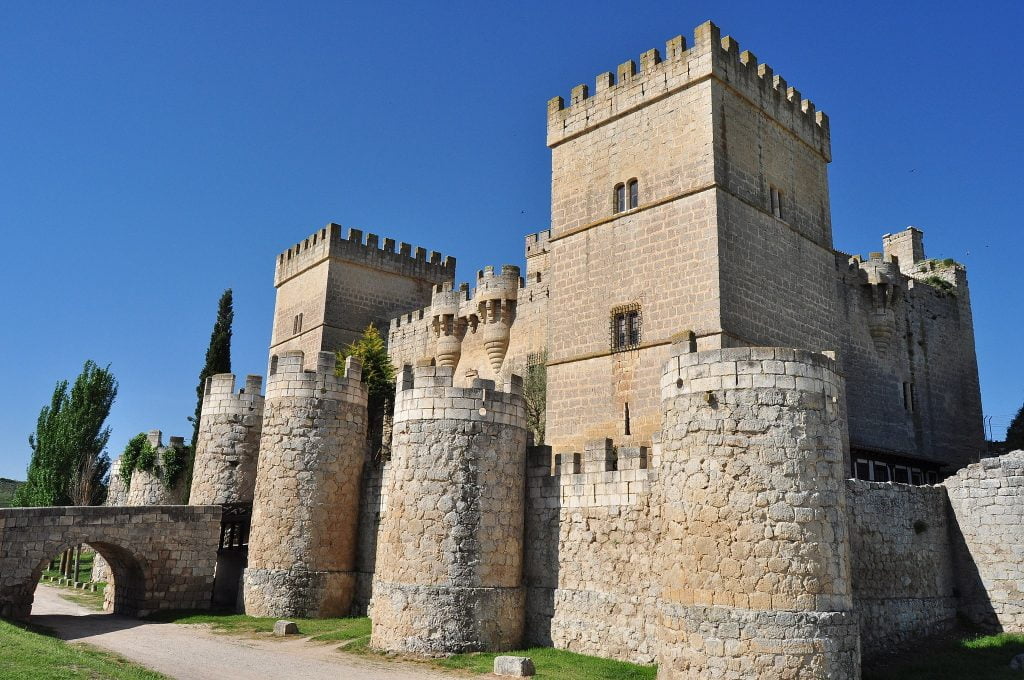
Originally belonging to Alfonso VIII of Spain, Castillo Ampudia was passed down to his daughter and eventually changed several hands before finally coming into the possession of the Herrara family. Eventually, it was given to the Duke of Lerma, a notable era for the castle as it hosted the Spanish Court occasionally. After that, it succumbed to neglect.
It was later restored in the late twentieth century by Eugenio Fontaneda Perez – an eccentric businessman who used it to house its extensive art collection and antiques. As a result, it has become quite an interesting tourist destination for people who want to experience a variety of art while experiencing Spain’s architecture.
- Location: Palencia Province
- Time built: 11th century
- Architectural: Fortress Architectural Style
- Touring: Allowed. Visit the official website for more information.
17. Castillo de Cardona
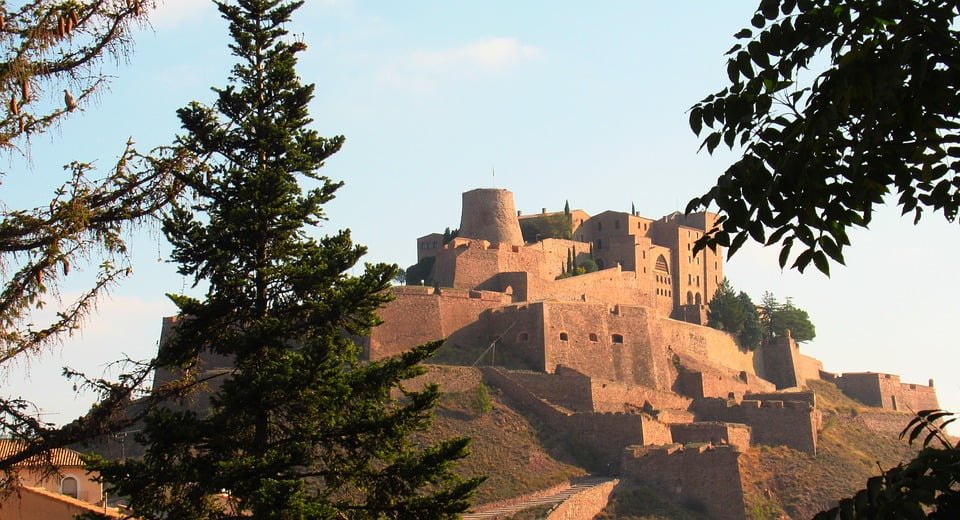
Resounding through history as the house of the Lords of Cardona, this castle was built in the Middle Ages and has been since added to by various owners over the centuries. Since the Duke of Cardona descended from the composite monarchy of Aragon, they were second only to the Royal family of Spain. Thus, this castle was extensive in its might, complexity, and visage.
Still hailed as one of the most striking castles in all of Spain, it has adapted to modern times and has been even used as the location of many movies. It also houses the ancient Church of Sant Vicenç de Cardona and remains in the possession of the Aragon family to this day!
- Location: Cardona, Catalonia
- Time built: Middle Ages
- Architectural: Romanesque-Gothic Architectural Style
- Touring: Allowed. Visit the official website for more information.
18. Castle of La Mota
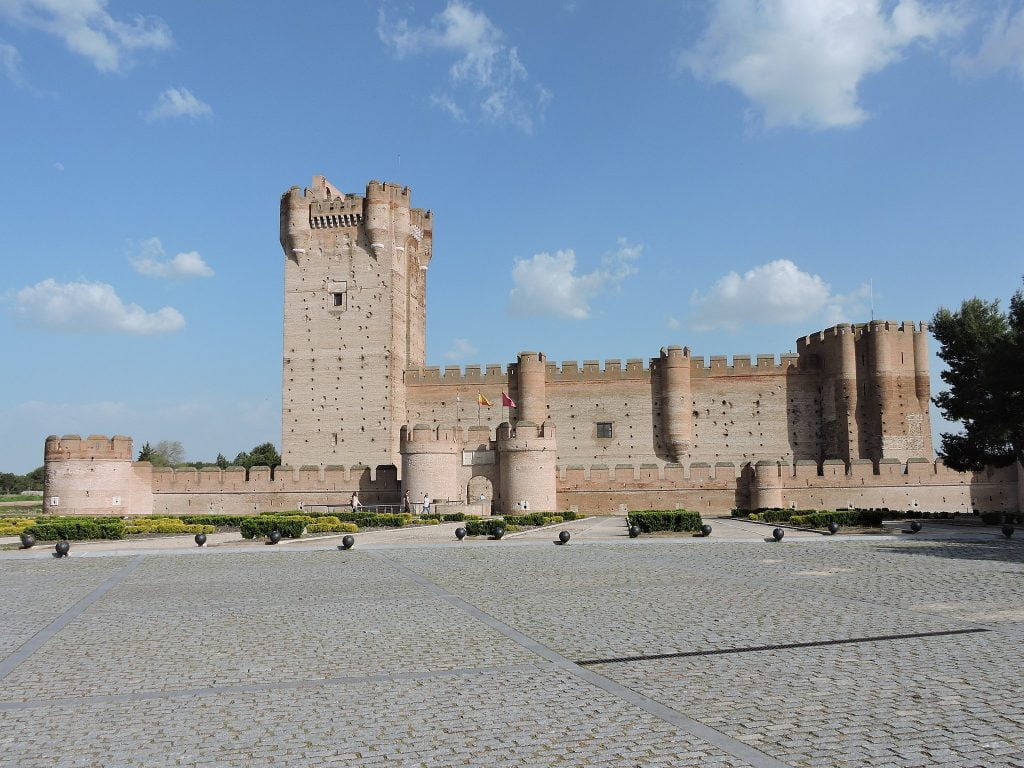
Castle of La Mota is a state-protected National Monument. It was originally constructed by the Moors and added to by various Spanish royals after multiple conquests. It has a rich history that features many Big Names of Spanish aristocracy (such as Afonso V, Isabella of Castle, etc), walking within its walls is certainly reminiscent of experiencing Spain’s historical heritage.
At the end of its glory, La Mota became a prison that was used to house many prominent inmates such as Fernando, Duke of Calabria, and Italian cardinal Cesare Borgia.
- Location: Medina del Campo, Valladolid
- Time built: 11th century
- Architectural Style: Medieval Architectural Style
- Touring: Allowed. Visit the official website for more information.
19. Penafiel Castle
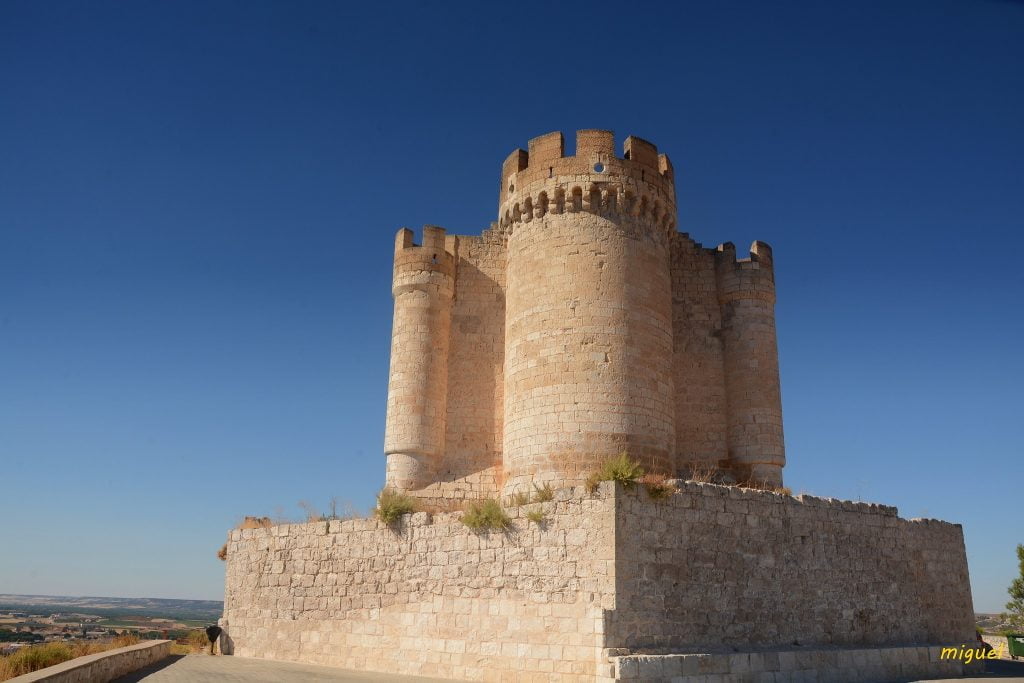
Penafiel Castle is another National Monument brimming with inherent history and charisma. Its elongated layout and span are perhaps its most distinguished characteristics. The fact that it runs 660 feet long (200 meters) makes it a veritable icon of history – very few other castles in the world can boast this layout.
Originally built as a frontier outpost, Penafiel Castle was built by Sancho Garcia and kept being added to by the inheriting nobility. Today, it houses the Museum-Foundation of the “Wines of Valladolid.”
- Location: Peñafiel, Valladolid
- Time built: 1013
- Architectural Style: German-Gothic Architectural Style
- Touring: Allowed. Visit the official website for more information.
20. Castillo de Burgalimar
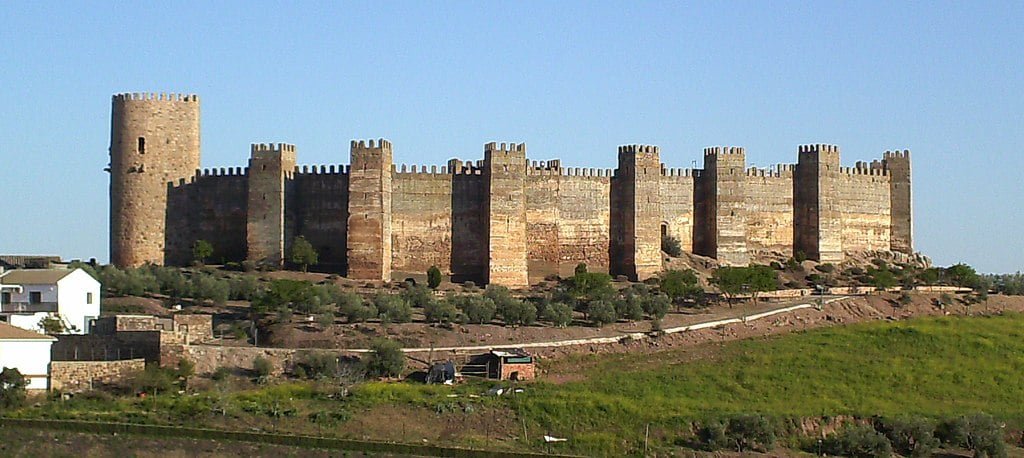
The first thing that you notice about Castillo de Burgalimar is its tall crenelated wall, boasting 14 small and 1 large towers! As the second-oldest castle in all of Europe, it’s definitely worth a visit if you want to experience the heritage of the country.
This 10th-century fortress boasts a sturdy Muslim construction and remains one of the most well-preserved examples to date. The fact that this castle has withstood the tests of time is a testament to its qualitative establishment and assembly!
- Location: Banos de la Encina
- Time built: 10th century
- Architectural Style: Gothic Keep Architectural Style
- Touring: Allowed. Visit the official website for more information.
Planning to Explore Europe? Check Out These Best Castles Lists:
Conclusion
A visit to Spain can never be complete without a visit to the many awe-inspiring castles that dot its landscape. Filled with eons of history, war, adventure, they are enchanting and magical, an amalgamation of styles that reflect the changes and additions that have been made by conquering rulers over centuries of history.
Plan your itinerary carefully and have fun exploring this beautiful country and its astounding castles. For more information and helpful tips, feel free to browse around our website and contact us in case of queries.

